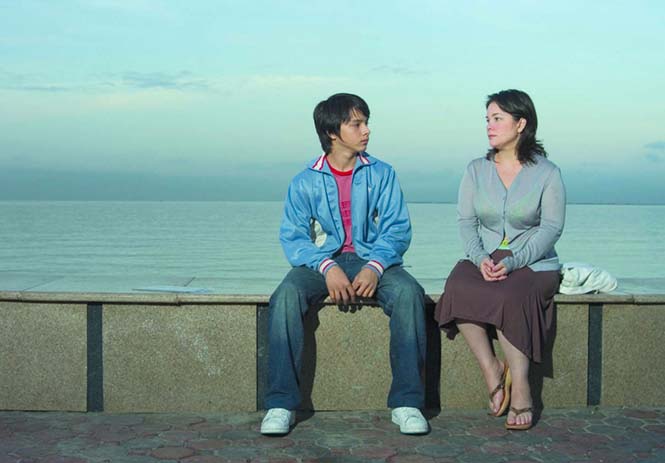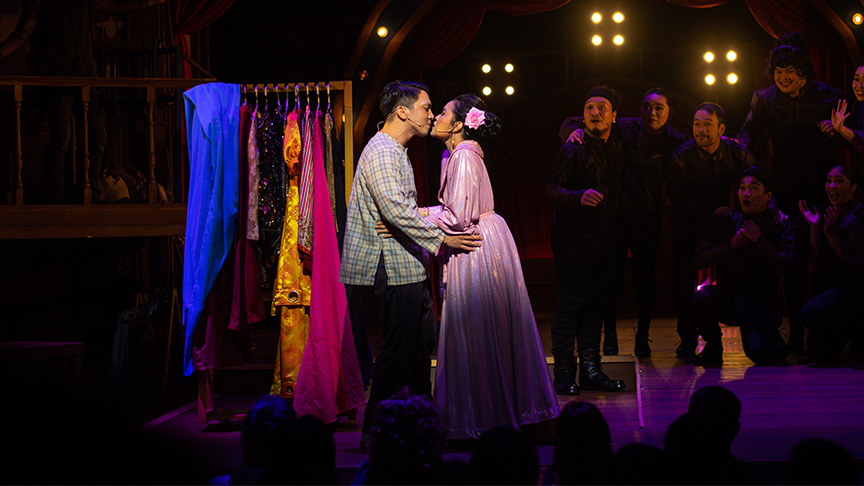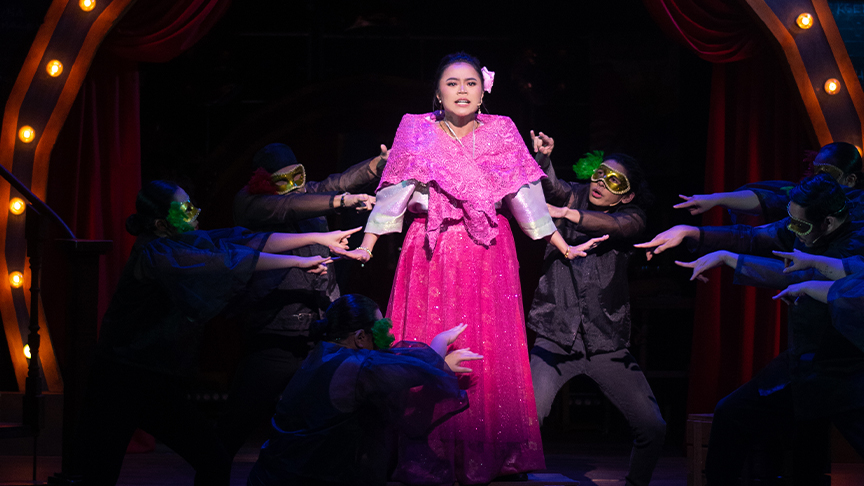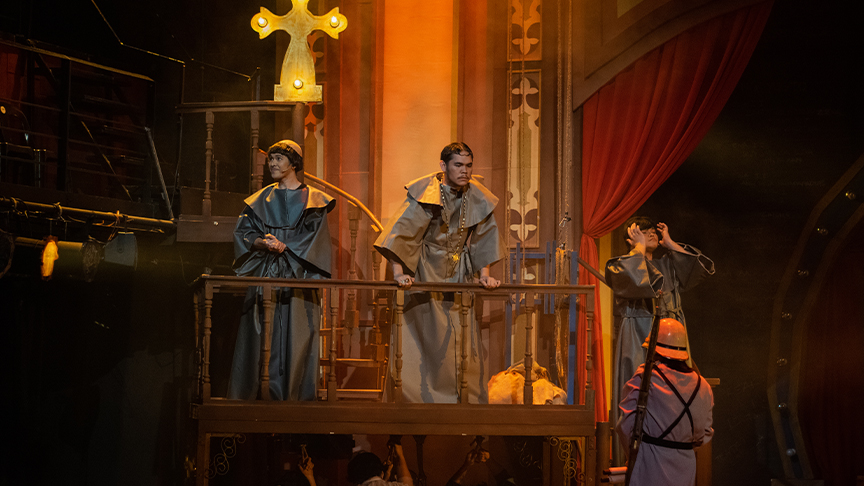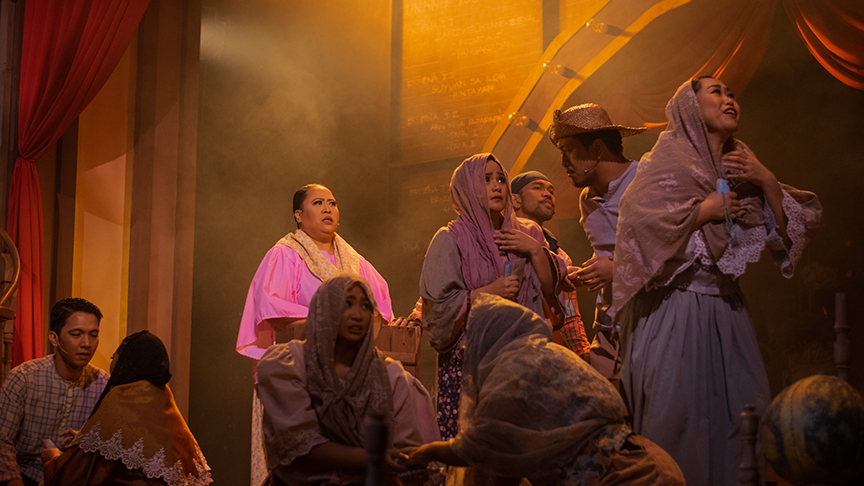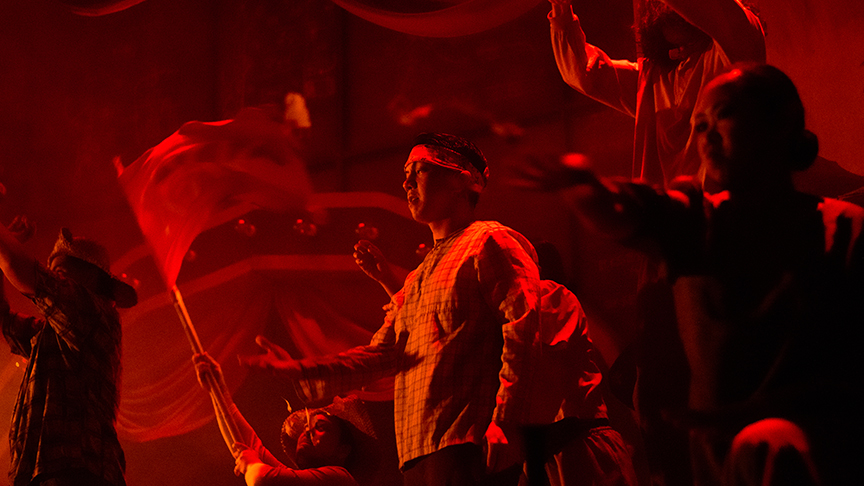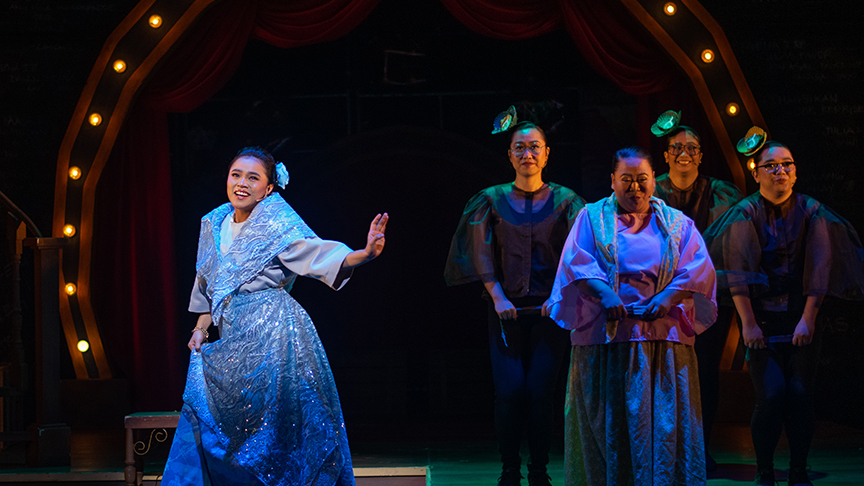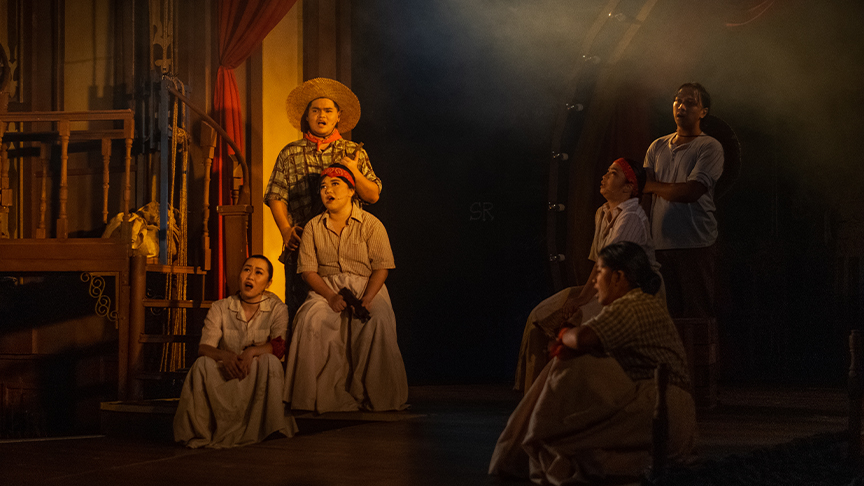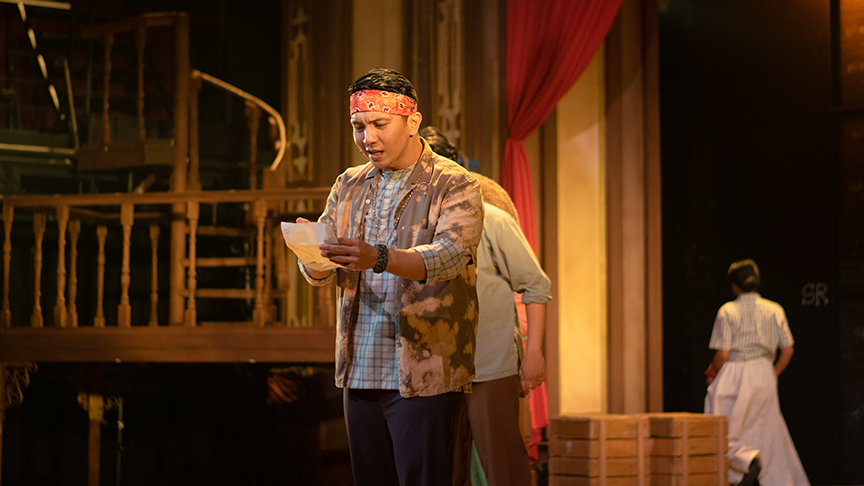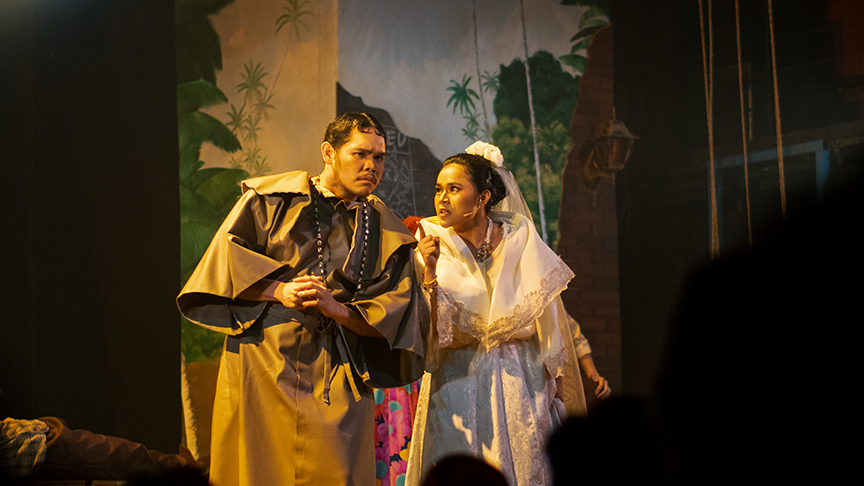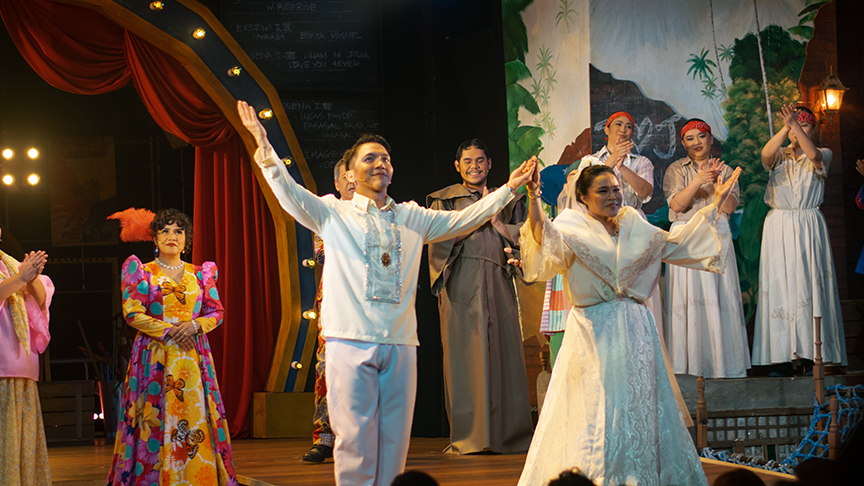Before these big (Western) musicals (think Hamilton, or Miss Saigon), we had the zarzuela. Admittedly, this is a form of entertaiment that is a leftover of the West (i.e. Spain) in the Philippines. But this has already been “localized”, with the dramatic genre that makes use of spoken and sung scenes long incorporated with, among others, narratives affecting the Philippine society, local songs (including pop), et cetera.
I am starting this article with this mainly because Rody Vera’s “Walang Aray” (reimagining Severino Reyes’ classic zarzuela “Walang Sugat”), a production of Philippine Educational Theater Association (PETA), is a zarzuela. Though – to be honest – this is a local production that, truly, deserves the attention those White-produced productions get for being just-as-good (or better, it can be argued, for being more “relevant” to us).
Looking at “Walang Aray” closely, there are some points worth stressing why this is worth watching (again and again, in fact).
SIMPLE STORY… MADE MASALIMUOT (COMPLICATED)
To start, the story is… simple: Here are two lovers from different sides of society (one poor, the other rich) trying to make their relationship work. The context isn’t modern (Spanish times in the Philippines) so the kontrabida (villains) are different, though the representations remain the same – i.e. people in positions of power creating hurdles to that love so it can’t blossom.
That story is actually very Pinoy. Thought the kabit (other woman in any relationship) is nowhere to be seen in “Walang Aray”, this plot sounds like so many of the telenovelas plaguing our TVs and cinemas for ages already.
VERY PINOY TELLING
But beyond that storyline, the telling is very Pinoy, too.
Start with the overwhelming side stories, stressing how Filipinos tend not to tell stories sans the additional sangkap (ingredients). “Walang Aray” isn’t just a “traditional” love story between two people, but also a love story between a nationalist and his/her/their lupang sinilangan (birthland), so we also superficially deal with the plight of the Katipuneros who fought for the end of the Spanish colonialism in the country in the 1800s. It isn’t just about arranged marriages (a balakid or hindrance to the couple), but also about LGBTQIA people’s coming out processes. It isnt just about abuse of power of church leaders, but about women finding their power, at least enough to manipulate the system to work for their benefit.
Sounds complex, right? But this isn’t, really (not when you watch it at least). Just note that while the overstuffing of these narratives may make the material bloat, these actually make “Walang Aray” interesting particularly for those watching who are used to the Pinoy way of storytelling that “demands” for those telling the story to add as many of these side narratives as possible. And so for those familiar with, or are seeking for this type of storytelling, then “Walang Aray” actually works… big time.
THE MUSIC, THE DANCING
The singing and the dancing help, of course (told you, this is a zarzuela), thanks, largely, to: Vera who did the libretto, Vince Lim who did the pop tunes, Ian Segarra who did the directing, and Gio Gahol who did the choreography. That they were able to weave this what-may-appear-to-be-basic love story into a social commentary on power play (including abuses of power) is beyond commendable.
Now note this: With all productions, note that there may be times when “big” celebrities get meaty roles both because of their talent and their fame. Realistically, some get these roles more for their fame than their actual talent – i.e. they may be “good”, but there’d be others who may be less popular than them who may be way, way beter than them.
Fortunately, with the cast witnessed for this review, the singing was beyond… inspiring.
Gahol (the choreographer) played Tenyong, the love interest of Julia, played by Shaira Opsimar. Both were good, really good – e.g. when Opsimar sang her first line, I heard someone actually say “She’s singing?” in disbelief. That they have comedic timing was also notable – e.g. Opsimar breaking her singing so she can “chase” the spotlight while supposedly in anguish while singing while seated on the floor.
The other members of the main cast (at least in the production watched) were just as remarkable: Norbs Portales as Don Tadeo, John Moran as Padre Alfaro, Bene Manaois as Miguel, Carlon Matobato as Lucas, Kiki Baento as Monica, and Neomi Gonzales as Momsy/Donya Juana. For instance, you may ask “Where’s the abs?” as mentioned in the lyrics sang by Manaois, but that he’s a good-looking guy who can sing extremely well (as demanded by the role of Miguel) can definitely NOT be questioned. And you may find some of the songs lengthier than they should be – e.g. piece sung by Matobato – but that the Lucas character can steal scenes is, well, a good surprise.
Yep, some of the members of the non-main roles were also scene stealers – e.g. the multi-roled mananahi (tailor) – who made “Walang Aray” a definitely-not-boring affair.
As side note (and must-mention): The costuming was… interesting, reminding you of how “A Knight’s Tale” (2001) modernized medieval costumes; and the lighting was just-as-interesting, at times reminding you of the colors used in some of Amorsolo’s paintings (particularly when you see pics taken during the show). Since this is PETA, I suppose, that high expectations were reached makes one breathe a sigh of relief…
Let this also be known: That the second act seemed meandering (e.g. too many forgettable pieces; some pieces too long; rushed ending) was noted by another person watching “Walang Aray“. Though only momentarily… since the overall impact remained the same: this was (yes) well liked.
COME FOR THE STORY (AS TOLD BY PETA), STAY FOR THE MESSAGE
PETA’s “Rak of Aegis” was effective because it used songs already known to many Filipinos (i.e. Ageis’ songs). With “Walang Aray”, though, PETA sort of started from scratch, giving us pieces that have yet to invade the airwaves. NOT that this is bad; just a reminder that “Walang Aray” manages to captivate even without this familiarity of its pieces.
I’d say… it’s thanks to the proper handling of a material that effectively wove social commentaries about issues that continue to plague us in the present day with campy humor and satire. And so in the end – at least for me – you may want to check “Walang Aray” for the tale it wants to tell, using more-than-effective cast and crew, but stay liking/loving “Walang Aray” for the messages you may derive from it… – WITH ARTHUR ABAD NWABIA
























